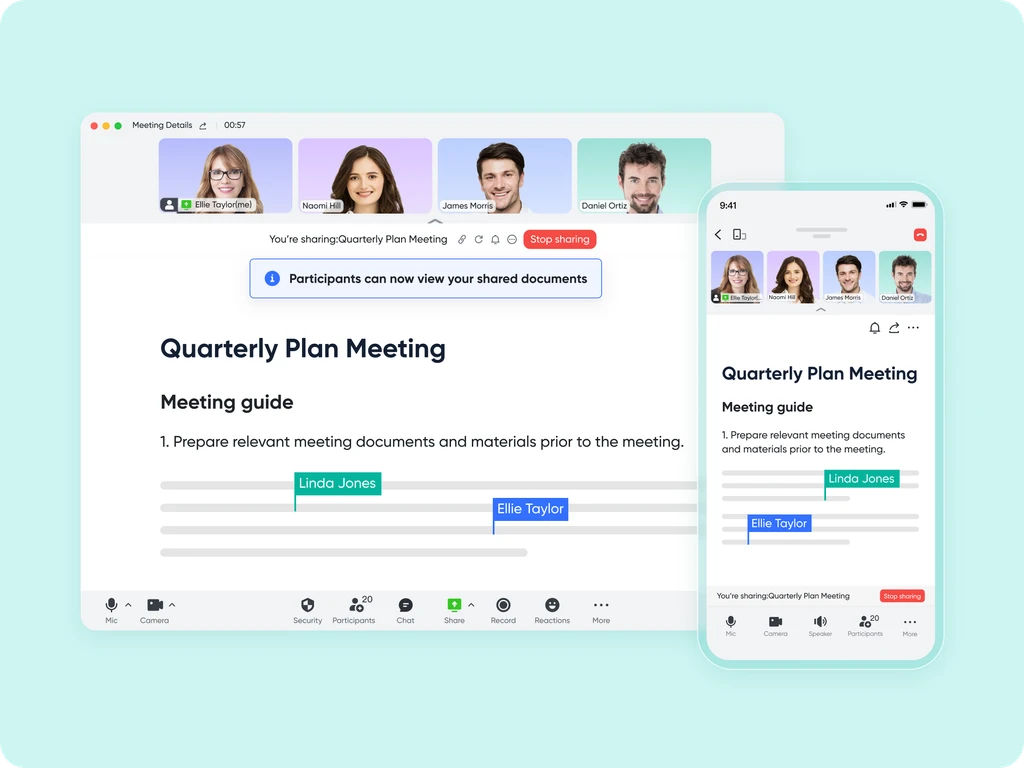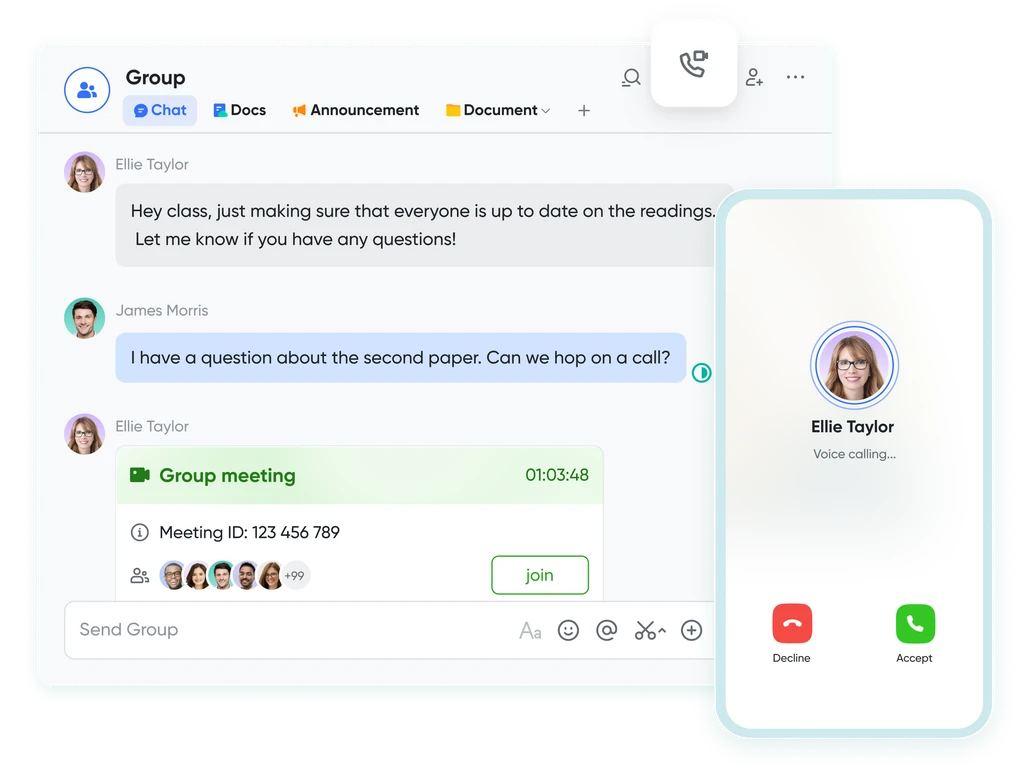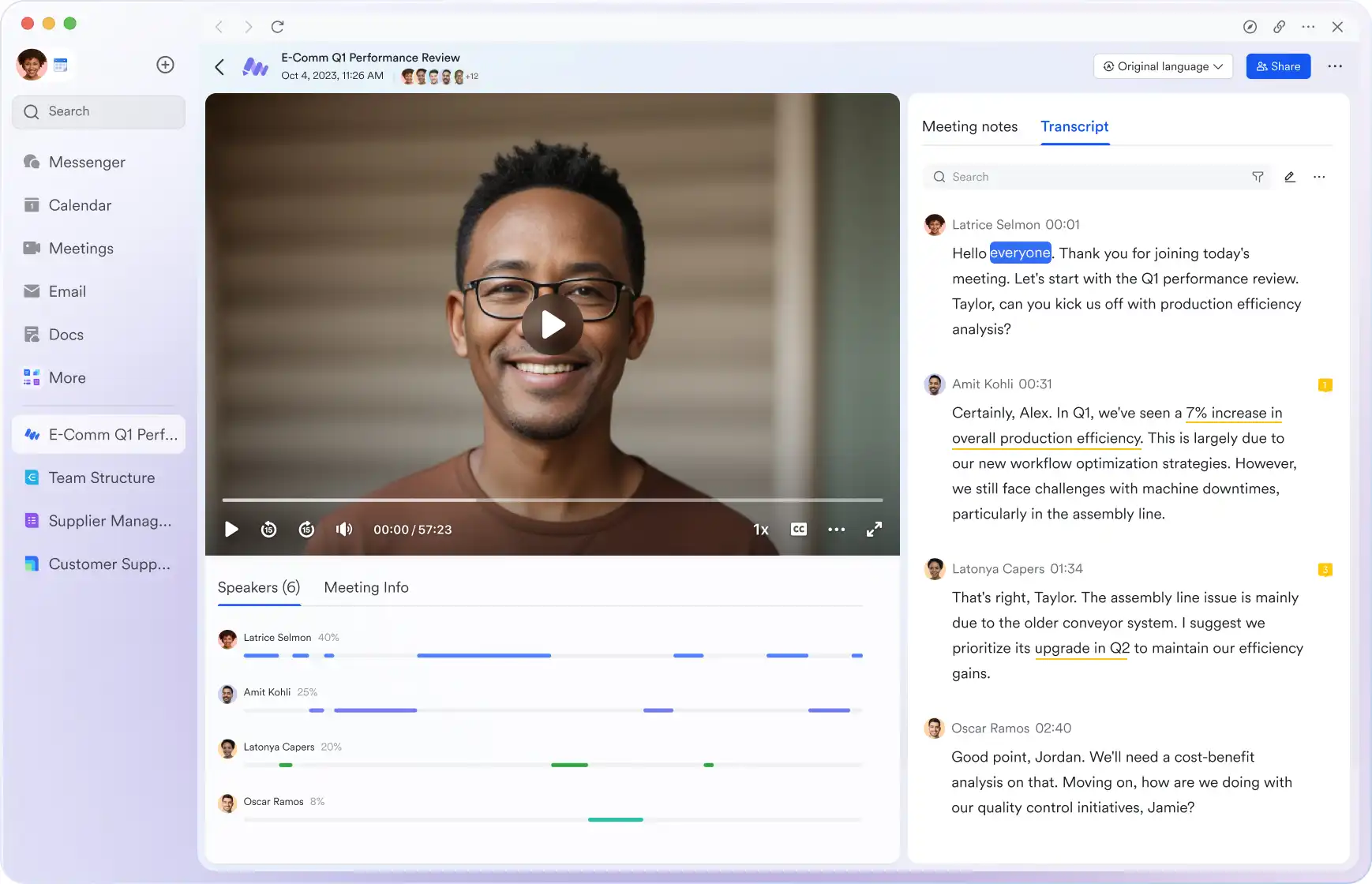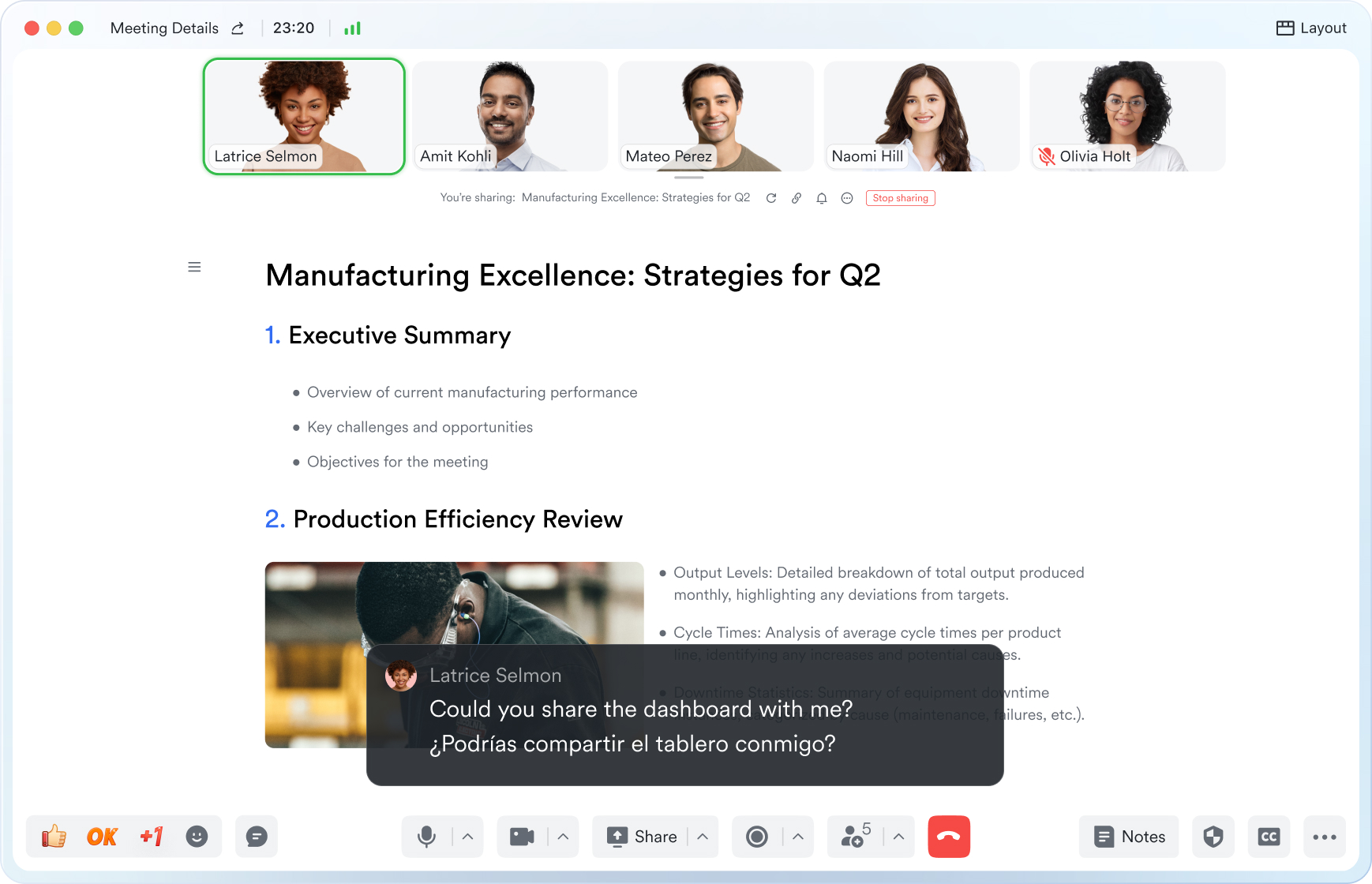Walking Meeting
This guide will walk you through the essential elements of use walking meeting to keep your attendees aligned and engaged.
Try Lark for Free
Walking meetings have become increasingly popular in modern workplaces due to their numerous benefits and positive impact on productivity and well-being. In this comprehensive guide, we will explore the concept of walking meetings, their advantages, strategies for hosting successful walking meetings, and best practices to maximize their effectiveness. Whether you're a business leader, manager, or professional looking to enhance collaboration and engagement, mastering the art of walking meetings will undoubtedly elevate your work environment and outcomes.
Use Lark Meetings to turn meetings into true collaborative experiences.
What is a walking meeting?
A walking meeting is a form of meeting where participants engage in discussions and decision-making while walking, typically in an outdoor setting. Unlike traditional meetings that are often confined to conference rooms, walking meetings offer the opportunity for participants to enjoy the benefits of physical activity while engaging in productive conversations. This innovative approach to meetings encourages fresh thinking, creativity, and a healthy work environment.
The advantages and goals of walking meetings
Walking meetings offer a myriad of advantages, including improved physical health, enhanced mental well-being, and increased productivity. The goals of walking meetings encompass fostering creativity, promoting active engagement among participants, and providing a dynamic platform for problem-solving and decision-making.
Who should attend walking meetings?
Walking meetings are inclusive and beneficial for professionals across all levels of an organization. Participants may include executives, managers, team leaders, and individual contributors. This diverse mix of attendees ensures a broad spectrum of perspectives and insights, contributing to the overall richness of discussions and outcomes.
Related:
Unlock the Power of Webinars: A Comprehensive Guide to Boost Your Business | Lark Blog | Lark BlogLearn more about Lark x Meetings
Crafting the topics, agenda, and structure of a walking meeting
Creating engaging and purposeful agendas for walking meetings is essential for ensuring productive discussions and effective utilization of the meeting time. The agenda should be tailored to accommodate the walking setting while addressing specific topics and goals to be achieved during the meeting.
Learn more about Lark x Meetings
How often should a walking meeting occur?
The frequency of walking meetings may vary based on the organizational culture, the nature of work, and the preferences of the participants. In general, hosting walking meetings on a regular but not overly frequent basis can maintain their effectiveness and novelty.
Key differences between walking meetings and traditional meetings
Walking meetings offer a dynamic and unconventional approach to discussions and decision-making in contrast to the typical stationary setting of traditional meetings. The distinct benefits of walking meetings include increased creativity, improved physical well-being, and a more energetic and engaging atmosphere.
Related:
Unlock the Power of Webinars: A Comprehensive Guide to Boost Your Business | Lark Blog | Lark BlogLearn more about Lark x Meetings
Three practical examples of successful walking meetings
-
Innovative Brainstorming Sessions: Marketing teams have successfully utilized walking meetings to fuel creativity and develop innovative strategies for campaign planning and content creation.
-
Leadership Strategy Walks: Senior executives have conducted walking meetings to engage in high-level strategic discussions while enjoying the physical and mental benefits of walking.
-
Team Building and Problem-Solving: Cross-functional teams have organized walking meetings to address challenges, foster collaboration, and strengthen team dynamics in a dynamic outdoor environment.
Common pitfalls and how to avoid them in walking meetings
Despite their many benefits, walking meetings can present challenges such as distractions, fatigue, and variable weather conditions. Mitigating these pitfalls involves effective planning, clear communication, and adaptability to ensure a productive and enjoyable experience for all participants.
Related:
Master the Art of Meeting Notes with Lark for Enhanced Collaboration | Lark Blog | Lark BlogLearn more about Lark x Meetings
Dos and don’ts of conducting a productive walking meeting
| Do's | Don'ts |
|---|---|
| Encourage active participation | Avoid complex and challenging terrain |
| Define clear meeting objectives | Engage in prolonged or distracting side conversations |
| Appreciate and respect diverse perspectives | Neglect safety and well-being considerations |
| Incorporate physical breaks for reflection | Force participation from unwilling individuals |
At all times, safety and inclusivity should be prioritized to ensure a positive and productive walking meeting experience.
What makes a virtual walking meeting successful?
Virtual walking meetings blend the concept of walking meetings with remote collaboration. Key elements for success include a seamless virtual platform, engaging discussions, and innovative approaches to incorporate physical movement and interaction despite the virtual setting.
Learn more about Lark x Meetings
Typical takeaways from a walking meeting
Participants in walking meetings often benefit from fresh perspectives, enhanced creativity, improved mood and energy levels, and a sense of shared accomplishment. The takeaways may include new insights, actionable decisions, and strengthened team dynamics.
Effective questions to ask in a walking meeting
- What inspired you this week in your work or personal life?
- How can we approach [specific challenge] from a different angle during our walk today?
- What steps can we take to translate our discussion into actionable outcomes?
Related:
Unlock the Power of Webinars: A Comprehensive Guide to Boost Your Business | Lark Blog | Lark BlogLearn more about Lark x Meetings
Conclusion
In conclusion, walking meetings are a powerful tool for fostering collaboration, creativity, and overall well-being in the modern workplace. By recognizing the unique advantages of walking meetings and leveraging best practices for their implementation, organizations and individuals can effectively harness the benefits of physical activity and enrich their meeting experiences.
Use Lark Meetings to turn meetings into true collaborative experiences.
A Game Changer for Walking Meeting: Empower your team with Lark Meetings
In the fast-paced and dynamic world of modern business, effective communication and collaboration are crucial for success of Walking Meeting. Here we introduce Lark Meetings to serve as a centralized hub for all communication needs.
Transform your meetings into collaborative endeavors

Leverage the potency of in-call document sharing, intelligent meeting minutes, and mobile-optimized features to enhance productivity collaboratively, irrespective of your location or schedule.
Seamlessly collaborate in real-time, across any device

Share live documents instead of just screen views. Participants can navigate and edit simultaneously within the video call window, even while on the move.
Shift your focus to engagement, not note-taking

Lark Minutes automatically converts video meetings into transcripts, facilitating easy viewing, searching, and collaborative editing. Stay in the loop asynchronously, even if you can't attend the live meeting. Lark Minutes for meeting minutes support translation into 10+ different languages.
Break language barriers in communication

Lark Meetings provide real-time translation for subtitles, allowing individuals from diverse backgrounds to express themselves in their native languages. Ensure every voice is heard, regardless of geographical location. Live subtitles currently support translations from English, Chinese, and Japanese to 10+ different languages. See more translation feature in Lark.
Connect with larger audiences
Host dynamic online meetings and events accommodating up to 1,000 participants, with the flexibility of up to 50 breakout sessions for intimate group discussions within the larger meeting context. Try more Lark features for free.








